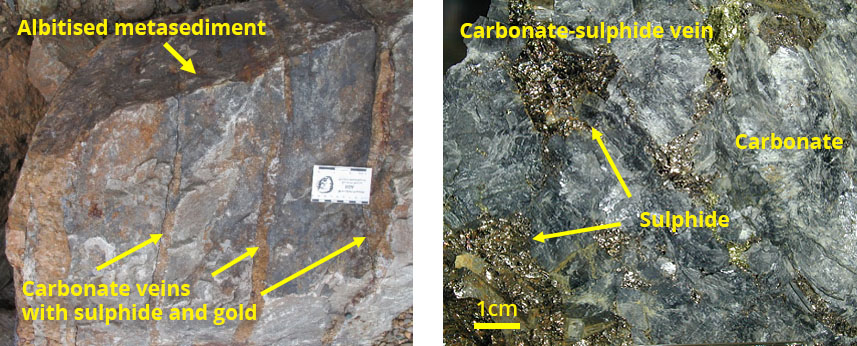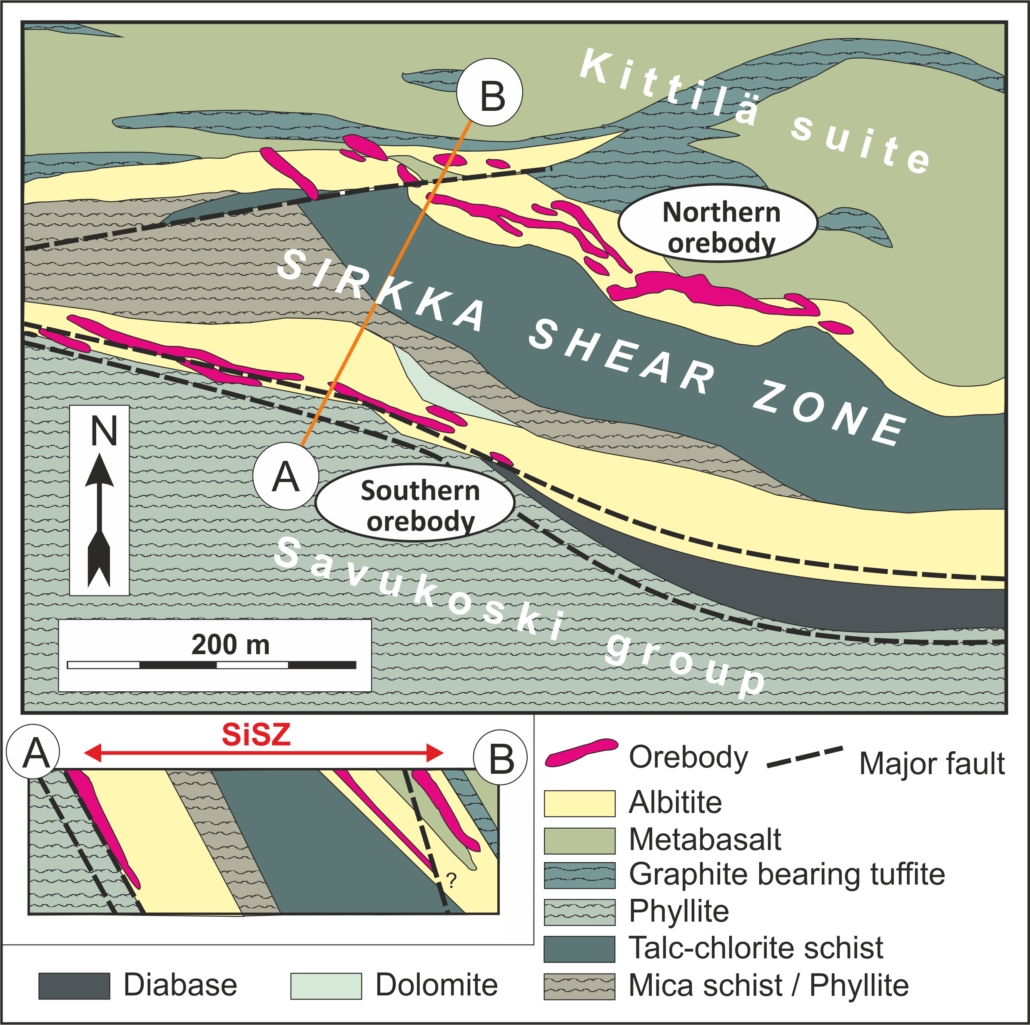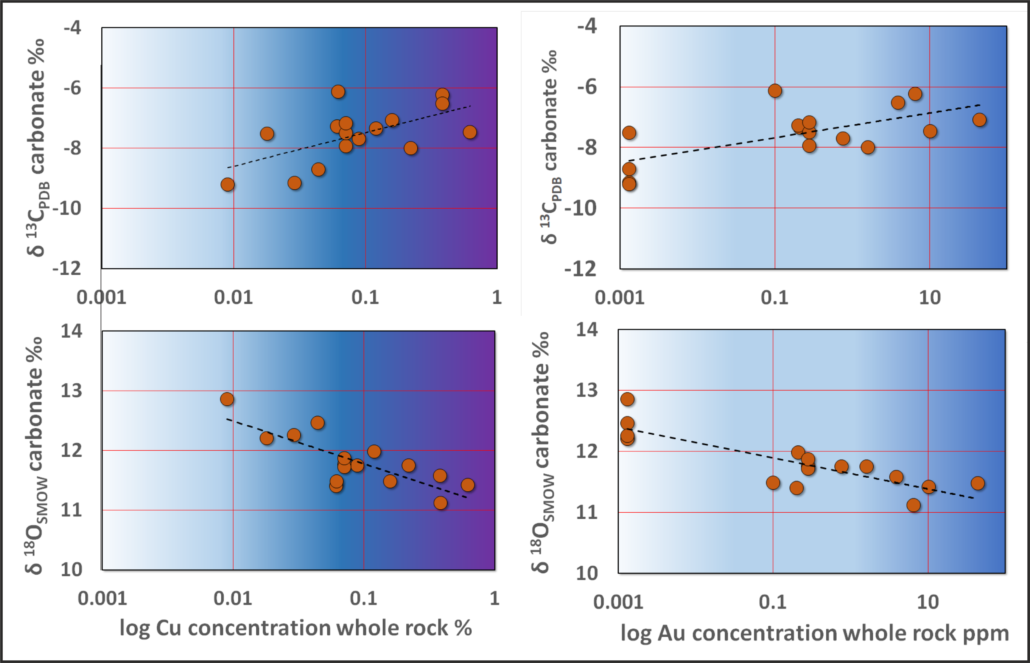The Central Lapland Greenstone Belt hosts numerous orogenic gold deposits which are enriched in Cu, Ni and Co. The Saattopora Au-Cu deposit is located in the Sirkka Shear Zone in the western part of the belt. In this part of the CLGB, the metasedimentary and metavolcanic rocks of the Savukoski Group and Kittilä Suite suffered mid-green-schist facies Svecofennian metamorphism.
The deposit consists of two major orebodies which are elongated parallel with the Sirkka Shear Zone. The northern orebody is located between the tholeiitic meta-basalt-graphitic tuffite assemblage of the Kittilä Suite and a metakomatiite (talc-chlorite schist) unit belonging to the Savukoski Group. The southern orebody is mostly hosted by the micaschist and the graphitic phyllite units of the Savukoski Group. The host rocks are strongly albitized in the orebodies but pervasively albitized zones are also continuous outside of the orebodies. Albitization affected the host rocks after peak metamorphism and folding. Ore mineralization is predominantly confined to brittle fractures cutting albitites and alteration halos around them.
Fractures are filled by coarse grained, un-deformed Fe-bearing dolomite, quartz and tourmaline. Pyrrhotite, chalcopyrite and pyrite are the most common ore minerals in these veins and surrounding disseminations. Sulphide minerals are late precipitations along grain boundaries and fractures of other vein filling minerals. Pentlandite, gersdorffite, cobaltite, arsenopyrite, tellurides and native gold are minor minerals.
The abundance of Ni-Co bearing minerals appear to be elevated in some samples, but the average concentration of Ni is only 0.06 wt% and 0.11 wt% in the northern and southern orebodies, respectively. The average Co concentration is 0.02 wt% in both orebodies.
The Outokumpu Mining Ltd. extracted 2.24 Mt ore with 3.4 g/t Au and 0.31 wt% Cu average grades between 1988 and 1995 but the mineralization is open to the depth. The high grade ones are controlled by the abundance of carbonate veins in albitite. The C- and O-isotope data from Type 2 carbonate veins correlate with the Au and Cu grade of ore. The high grade zones are characterized by relatively heavy C-isotope and relatively light O-isotope data compared to the low grade and barren zones. This correlation indicate that oxygen and carbon isotope characteristics of carbonates can be used as vectors to deeper high grade zones.





